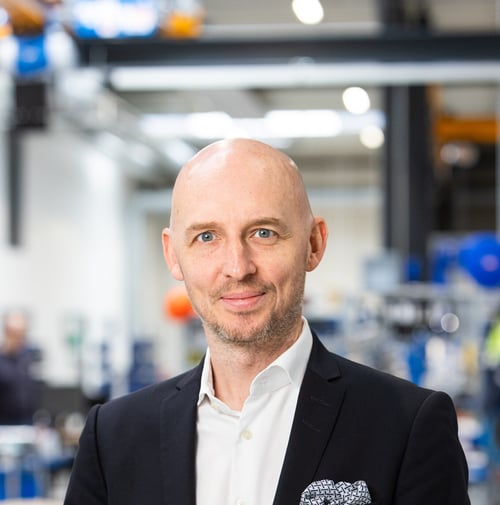In the short term, we will work towards obtaining a modest combined market share of 15 percent. When we achieve this, we will expand our client portfolios and move quickly to obtain a bigger EU/US market share.
Our mission is to deliver fueling solutions that provide the same user experience that the current diesel or fossil-based alternative does today. Our job is to make sure that a driver can pull up in a truck, take a dispenser, put it in the tank, and fill the hydrogen equivalent of a full tank in the time it takes to fill 1500 liters of diesel—10 to 15 minutes. At our headquarters in Herning, Denmark, we are already prototyping a solution that makes all this possible, building on constructive partnerships and 20 years of know-how and experiences, good and bad, from the light-duty vehicle hydrogen-fueling sector. From 2025, we will offer our new high-capacity hydrogen refueling stations to the market. It’s an exciting time for our new company and zero-emission transport as a sector.
As I am writing this, my colleagues and I are splitting out from Nel Hydrogen to form Cavendish Hydrogen; a company standing on its own two feet. There are many practical reasons for this. Chief among them is the changing nature of the hydrogen sector itself. In 2015, we believed that hydrogen refueling stations would come equipped with electrolyzers producing hydrogen on-site. Today, we know that hydrogen must be produced at scale to be economically viable, preferably in sizable facilities in areas with abundant, affordable energy. This changing model, combined with the fact that making refueling equipment and electrolyzers are two very different industrial processes, has convinced us that focusing on refueling equipment as a separate company makes for a better business case. It’s as simple as that.
With the new company comes a new focus. Going forward, Cavendish will develop and sell high-capacity refueling stations exclusively, moving away from light-duty vehicle refueling infrastructure altogether. We do this because the heavy-duty transport sector has the greatest potential for hydrogen-fueled decarbonization. Today, the fastest chargers can get the battery of a light-duty electric car from 20 to 80 percent in 25 minutes. A battery electric long-haul vehicle, on the other hand, would need a battery equivalent to ten light-duty vehicle batteries. The size of such a battery means that charging from 20 to 80 percent would take upwards of 250 minutes. This is simply not viable in a sector built around 10-minute stops for filling diesel and changing drivers. With our new generation of hydrogen refueling stations, we make it possible to cut emissions considerably without changing the business models of the transportation companies we all depend on. And by powering long-haul transport with hydrogen instead of batteries, we can also help ease the pressure on already strained electrical grids across the globe. A heavy-duty vehicle charging station with ten high-capacity chargers would claim about 30 megawatts of power. To put it into perspective, that’s more than three times the baseload of Herning, a city of 50,000 people. Both for the transportation sectors and our strained electrical grids, hydrogen is the better option.

“As an organization, we are transitioning to working on a new technology everyone believes in. As we turn the page on a new chapter, everyone working at Cavendish is confident in our people, in our product, and in our ability to grab sizable market shares in Europe and the US—playing an instrumental part in the vital task of getting the world to net zero emissions. I hope you will join us. ”
– Robert Borin, Chief Executive Officer of Cavendish Hydrogen.